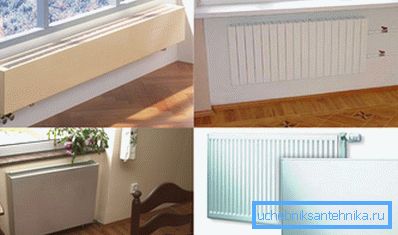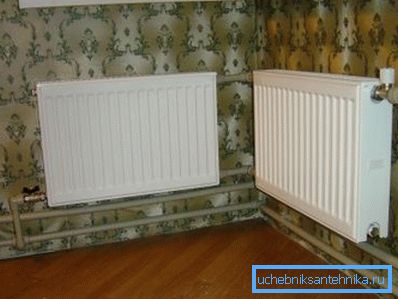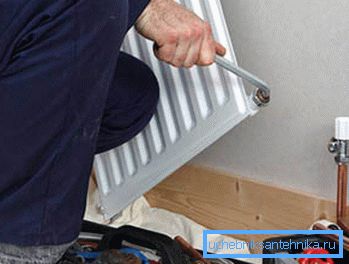What are water wall heating convectors used for?
To create a normal indoor climate, it is necessary to properly organize the air exchange. The market offers a sufficient number of devices capable of maintaining the humidity and temperature levels in the given parameters. Among the latter, we will single out water wall-mounted heating convectors, which we will talk more about today.

We have to talk about:
- what is this equipment;
- what are the disadvantages of convectors;
- how it is possible to make installation of such heating devices.
Purpose
Convection is used to heat indoor air with almost all existing heating equipment. The exceptions are infrared emitters.
Most often under the name "convector" they mean a construction that meets the following criteria:
- The device does not accumulate a large amount of coolant in itself, as steel registers or cast iron radiators do.. Usually it is a coil of pipe, the diameter of which is the same as the water inlet to it.

- Fin plates are used, which are tightly worn on the pipe, welded or soldered due to the fact that its heat transfer is small.
- Installation of convectors is possible on the wall, on the floor or hidden, when the devices are hidden under a decorative grille, for example, in the floor, so that they do not take up space in the room. Wall-mounted electric convectors are also used for heating and inside-floor ones, but today we will not review them, as wall-mounted water convectors are more common.
- An additional option is often the screen that covers the fins and gives the product a touch of decorativeness.. The use of a primitive top flap allows you to adjust heat transfer and air flow.

A bit of history
Similar heating devices appeared 30 years ago in panel houses, where they replaced traditional cast-iron radiators. As usual, a good idea was not fully promoted, since without good external insulation they were not ready for such operating conditions. Concern about energy efficiency appeared only two decades later, which allowed them to gain a foothold in the market.
Then same turns of ordinary pipe diameter? they were not delighted with the fins put on them, so they tried to get rid of batteries of this type as quickly as possible. In addition, the temperature of the coolant also remained at the wrong level, so it was also not possible to organize normal heat transfer from the device to the room air.

Therefore, even if according to an agreed project, the size of the convector was abundant enough to heat the dwelling, the apartment owners were convinced in the very first winter that this was far from being the case. The temperature of the supply heating line was clearly insufficient, especially when it came to the Far East.
All the negative was as follows:
- Insufficient heat transfer of the “battery”, although after replacing it with a cast-iron radiator, the problem was completely solved.
- Unaesthetic appearance of the equipment, which is made obviously not a claim to beauty. Thus, it spoiled the interior of the room.
- The convector became a collection of dust, which was quite problematic to remove from its edges.
Our days
If 20 years ago we had a rare offer to sell convectors, because aluminum radiators were a big competitor for them, although their price was much higher, 10 years later they filled the stores of our stores again. Manufacturers took into account the mistakes of old models and completely reworked the design.
Buyers have appreciated the new product, in which:
- Appearance has been completely redesigned. Wall convectors no longer spoil the interior of the room, although so far they have not yet looked pretentious.
- Constantly sticking to adjust the air flow valve replaced the choke, which controls the flow and temperature.
Tip: at the same time with the throttle in the apartment building there should be a jumper-bypass, otherwise you and the neighbors in the riser will freeze in the compressed state.
- Began to offer more advanced models with a combination of aluminum, used for fins, with galvanized or even copper pipe. Due to the greater thermal conductivity of non-ferrous metal, this gave a tangible gain in efficiency.
- The convector again became popular in the budget sector of the market.

Installation
Below the instruction will tell you how to replace the old cast iron radiator with a new modern convector, where there is a distance of 500 mm between the axles of the liner:
| Dismantling the radiator | In an apartment building all the work must be done in the absence of water in the risers.
|
| Convector Mounting |
|

Tip: if necessary, heat the radiator plugs with a blowtorch to move them.
Conclusion
For 30 years, the convector has come a long way from unrecognizable equipment to that which has become necessary for many. Today he has a completely different look, completely fitting into the interior of any room. Modern convectors are not inferior in power to their competitors.
The video in the article will help you find additional information on this topic.